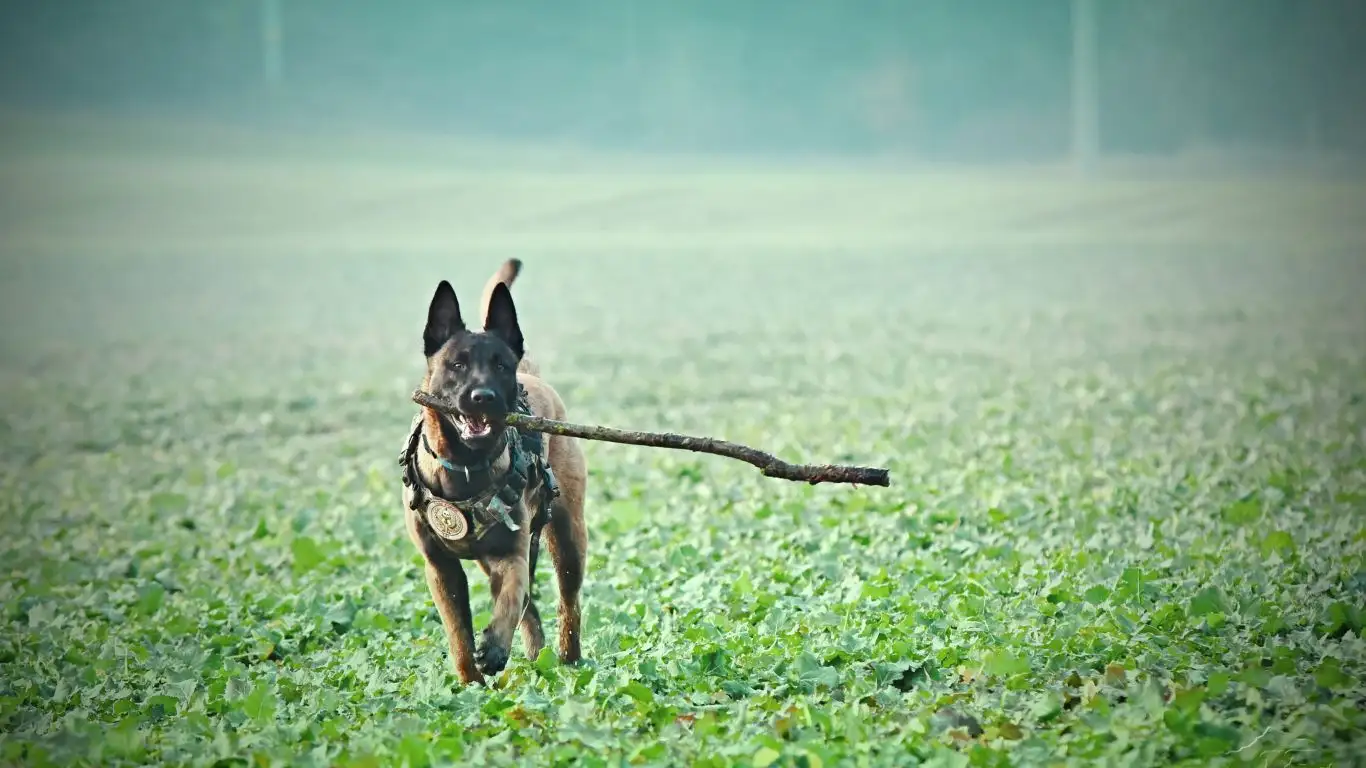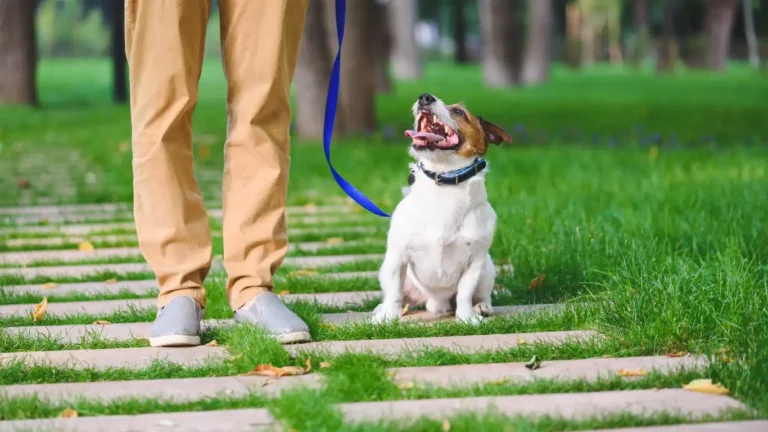How to Train a Dog to Stop Barking at Night: Proven Techniques to Calm Your Pup
Let’s talk about something that’s all too familiar for many of us dog lovers — that late-night barking frenzy. You know what I’m talking about. You’re finally drifting off, and suddenly your pup goes full-on alarm system mode at the sound of a raccoon rustling in the bushes. Yep, we’re diving into how to train a dog to stop barking at night animals — something I’ve tackled more times than I can count as a Canine-Assisted Therapy Trainer. And trust me, it’s not just about stopping the noise. It’s about helping your dog feel secure, confident, and calm when the world gets quiet and the wildlife gets noisy.
Understanding Why Your Dog Barks at Night

Instincts, Not Misbehavior
First off, let’s cut our pups some slack. Barking is natural. Especially when it’s triggered by something lurking outside their window — nocturnal critters like possums, raccoons, owls, or even stray cats. Dogs are protective by nature, and their senses are dialed up way higher than ours. So when they hear a squirrel’s feet on the roof at 2 a.m., they think they’re saving the family.
The Role of Breed and Temperament
Not all barks are created equal. Some breeds are just wired to be more vocal. I’ve worked with everything from ultra-alert Shelties to mellow Labs, and believe me, breed tendencies can be a huge factor. For example, a Beagle is gonna sing the song of its people when it smells a critter, no matter the hour. But it’s not about changing your dog’s nature — it’s about redirecting that energy smartly.
Anxiety and Lack of Structure
Here’s something many folks don’t consider: sometimes it’s not the wildlife that’s the real trigger — it’s the dog’s underlying anxiety. Without a structured routine or clear boundaries, dogs can become hyper-alert at night. That’s especially true if they’re not mentally or physically tired from the day. A bored dog plus night noises equals chaos. Simple as that.
First Things First: Set the Right Environment

Create a Safe, Cozy Nighttime Zone
Let’s start with the basics. Your dog’s sleep setup needs to feel safe. Think quiet, dim, and distraction-free. I always recommend a comfy crate (if they’re crate-trained), a cozy bed in a less-stimulating part of the house, and maybe even some gentle white noise or calming music. It can help drown out those little rustles from outside that set off the barking chain reaction.
Limit Their View to the Wild
Dogs are visual creatures. If your pup can see shadows or catch the movement of a raccoon running across the yard through the back patio door, it’s game over. Use blackout curtains or block off access to windows at night. One client of mine had a Border Collie that would patrol the windows until 3 a.m. — closing the blinds alone reduced 70% of the barking overnight.
Keep a Consistent Bedtime Routine
Just like kids, dogs thrive on routine. Same time, every night. Let them out for a final potty break, dim the lights, maybe give them a small treat or chew to wind down. When the routine feels predictable, your dog is more likely to relax and fall asleep instead of staying alert to every outside noise.
Training Basics: Teaching the “Quiet” Cue

Start When It’s Calm — Not During the Barkfest
One big mistake I see folks make is trying to train in the moment of chaos. Trying to teach “quiet” while your dog’s mid-howl at a skunk outside? Not the move. Instead, start during the day when your dog is already calm. Set up a minor trigger (like knocking on a wall or playing an animal sound quietly on your phone), let them alert, then say “Quiet” in a calm but firm voice. The second they stop barking, even for half a second, reward with a treat and praise.
Consistency is Everything
No shortcut here. You’ve got to practice this cue regularly — ideally daily — and pair it with real rewards. I like using freeze-dried liver or a favorite toy for high-value reinforcement. Eventually, once your dog gets that “quiet” = good stuff, they’ll start catching themselves when they hear something at night.
Use Management Tools When Needed
If your dog is really struggling at night, there’s no shame in using a few tools. I’ve had great success with calming aids like pheromone diffusers, anxiety wraps, or even vet-approved supplements for some of my more sensitive clients. Just make sure you’re not relying on these as a crutch — they work best alongside training, not in place of it.
Don’t Skip Mental Stimulation and Daily Exercise
A Tired Dog is a Quiet Dog
This one’s huge. You can’t expect your dog to sleep soundly if they’ve spent all day lying around with nothing to do. I always tell my clients: if your dog’s not mentally and physically drained by bedtime, they’re gonna find their own “job” — and barking at night animals is an exciting one. Even 15 minutes of scent work games, a puzzle feeder, or some backyard fetch before dinner can make a huge difference.
Make Training Part of Their Day
Mix obedience drills into their daily routine. Sit-stay at the door. Recall practice in the hallway. Reward calm behavior indoors. These things add structure and mental challenge, which helps reduce over-alertness at night. And bonus — your bond with your dog gets stronger with every rep.
Reinforcing Calm Behavior at Night

Catch the Calm Moments
This might sound simple, but it’s one of my go-to training hacks: catch your dog being good. Most folks wait until the barking starts to jump into action, but honestly, the best progress happens when you praise the quiet before the chaos. I like to keep a little stash of treats nearby, and if my dog stays quiet when he hears a rustle outside, I’ll toss him a “yes!” and a treat. It’s a small moment, but it builds habits. Dogs learn fast when there’s consistency and reward involved.
Use a Marker Word or Clicker
If you’ve done any clicker training, now’s the time to use it. Marking the exact moment your dog stops barking or chooses not to bark is powerful. One of my therapy dogs, Max, used to perk up and growl at every little night noise — once we paired quiet behavior with a click and a high-value treat, it was like a lightbulb moment. You’re essentially communicating: “That calm reaction? That’s what I want.” It’s all about reinforcing the good stuff more than punishing the bad.
Teach a Settle or Place Command
I love the “place” command for nighttime training. Teaching your dog to go to a designated bed or mat and stay there can be a game-changer. It gives them a physical spot that signals, this is your calm zone. When a noise triggers them, instead of reacting, they go to “place” and wait for you to release them. It takes a bit of practice — especially at night — but once they get it, it’s incredibly effective.
Desensitization to Night Sounds

Introduce Wildlife Sounds Gradually
This is one of my nerdy favorites. I’ll often use controlled sound exposure with dogs who react to night animals. I play audio clips of things like owl hoots, raccoon chattering, or even stray cat meows — starting at a super low volume while my dog is in a relaxed state. Over days or weeks, I slowly increase the volume. The idea is to normalize those sounds so they’re no longer startling. Eventually, the dog gets used to hearing them and doesn’t feel the need to react.
Pair Sounds with Positive Things
While you’re doing the desensitization work, make sure those sounds mean something good. Treats, belly rubs, a calming massage — anything your dog genuinely loves. One time, I had a German Shepherd client who would go ballistic at raccoon sounds, but after a few weeks of playing those same noises while he gnawed on a bully stick, he started to associate the sounds with chill time. Huge win.
Addressing Excessive Barking: When It’s More Than Just Noises

Check for Underlying Stressors
Sometimes barking at night isn’t about animals at all. It could be due to separation anxiety, changes in the household (like a new baby or a move), or even health issues. I always tell dog parents — don’t ignore a sudden change in behavior. If your usually calm pup starts barking every night, it might be worth a vet check or behavioral consult. You want to rule out pain, discomfort, or neurological stuff early on.
Make Sure Everyone’s On the Same Page
In multi-person households, consistency is key. If one person lets the dog out to bark at night while the other tries to correct it, the dog gets mixed signals. Sit down as a family or housemates and agree on the routine, commands, and expectations. I’ve seen way too many good training plans fall apart because one roommate thought it was “cute” when the dog woofed at the fence at 11 p.m.
When to Get Help From a Pro
Calling In a Certified Trainer or Behaviorist
Sometimes we just need backup — and that’s okay. If the barking at night animals is getting worse, or if it’s causing serious disruption in your life (or your neighbors’ lives), it might be time to loop in a pro. Look for someone with experience in canine behavior modification — ideally someone certified and well-versed in positive reinforcement methods. I’ve stepped into a lot of cases where simple tweaks made all the difference, but sometimes it takes a fresh set of eyes to spot the patterns.
Don’t Wait Until It’s a Bigger Problem
I can’t stress this enough: the earlier you intervene, the easier it is to resolve. Barking habits get stronger the longer they’re allowed to continue. If your dog has been on critter-patrol duty every night for months, they probably think it’s their job. That’s not their fault — it’s just learned behavior. The sooner you start training and reshaping that response, the sooner you’ll get those quiet nights back.
Tools That Can Help — But Aren’t a Magic Fix
White Noise Machines and Fans
Honestly, these are underrated. A simple fan or white noise machine can mask a surprising amount of outdoor noise. I’ve used them in foster homes, shelters, and client cases where barking was triggered by subtle wildlife movement. Sometimes the easiest fix is just not hearing the trigger in the first place.
Calming Products
There are a ton of calming aids out there — from pheromone diffusers to herbal supplements. Some of them genuinely help, especially when used as part of a training plan. I’ve had good results with calming chews that include L-theanine or chamomile, but always double-check with your vet before adding anything new. Think of these tools as helpers, not solutions.
What to Avoid
This one’s important: avoid shock collars or any tool that punishes barking without addressing the root cause. Not only can they increase anxiety, but they also teach your dog that being alert is “bad,” which can backfire. I’ve seen dogs develop new problem behaviors after being punished for barking. There’s always a better, more humane way.
Advanced Strategies for Nighttime Barking Issues

Introduce Controlled Exposure Outdoors
Once your dog is doing well inside, it’s time to test things in a more real-world setting — your yard at night. Start small. Leash them up, go out together in the evening, and calmly observe. Don’t engage with critters or encourage the barking. The idea is to show your dog that nighttime doesn’t always equal danger or excitement. With one of my own dogs, I’d take him out with a treat pouch and reward every time he noticed an animal and stayed quiet. Eventually, he started looking at me instead of reacting.
Use a “Watch Me” or Redirect Cue
This cue has saved me more times than I can count. Teaching your dog to focus on you when you say “watch me” is gold when trying to break that automatic alert bark cycle. The moment they spot a possum, and instead of sounding the alarm, they turn to you? That’s training magic. Build it gradually — indoors first, then at the door, then outdoors. I swear by this one, especially for high-drive breeds like shepherds and terriers.
Reward Calm Behavior Even If It’s Not Perfect
This one’s a mindset shift for a lot of people: your dog doesn’t need to be perfect to earn praise. If your dog barks once and then settles instead of spiraling into a full meltdown, celebrate that progress. Behavior change is about improvement, not instant perfection. It took one of my therapy dog candidates nearly six weeks to stop barking at nighttime deer sightings — but every shorter reaction was a win on the path to calm.
Realistic Expectations and Patience

Know That Some Barking Is Normal
This might sound weird coming from a trainer, but here it is: some barking is totally normal. Dogs bark. It’s their voice. What we want to manage is excessive or reactive barking that disrupts your household or keeps everyone up at night. A single woof at a passing animal is natural — but a full symphony every time a leaf blows by? That’s what we’re aiming to reduce.
Adjust Based on Your Dog’s Personality
No two dogs are alike. What works for a chill Golden Retriever might not even make a dent with a high-strung Border Collie. I’ve trained dozens of therapy dogs and companion pups, and I always tailor the approach based on their energy level, history, and triggers. Some dogs need structure and rules; others need gentler confidence-building. Listen to your dog — their behavior is their way of communicating what they need.
Celebrate Progress (and Don’t Be Too Hard on Yourself)
I get it. It’s 2 a.m., you’re exhausted, and your dog’s barking again. You feel frustrated, maybe even defeated. But remember — progress is rarely a straight line. Celebrate the little wins: one quiet night, a faster recovery after a bark, or even a moment where your dog looked to you for guidance instead of reacting. That’s growth. That’s teamwork. And it’s what turns training into a lasting bond, not just a list of commands.
Let Your Dog’s Needs Guide the Training
Look at the Whole Picture
Sometimes barking at night animals is just the symptom — not the root problem. If your dog isn’t getting enough mental stimulation during the day, or if their nutrition or sleep schedule is off, that can fuel overreactions at night. I often recommend a full routine audit: How much exercise are they getting? Are meals regular? Is there enough down-time in their day? A few tweaks here can really smooth out the night behaviors.
Don’t Forget the Power of Scent Work
I’ll say it again — dogs experience the world through their noses. One of the best ways to drain mental energy before bed is a quick round of indoor scent games. Scatter feeding, hiding treats under cups, or using a snuffle mat is not only enriching — it also leaves them too mentally satisfied to bother barking at squirrels. Try it — I’ve seen wild results in dogs that couldn’t otherwise settle at night.
References
Disclaimer
The information provided in this article is based on my professional experience as a certified Canine-Assisted Therapy Trainer and is intended for educational purposes only. It should not replace personalized advice from a certified dog trainer or a licensed veterinarian. Every dog is unique, and results may vary depending on breed, age, temperament, health, and training consistency. Always consult with a qualified professional before beginning any new training regimen or behavioral plan.






